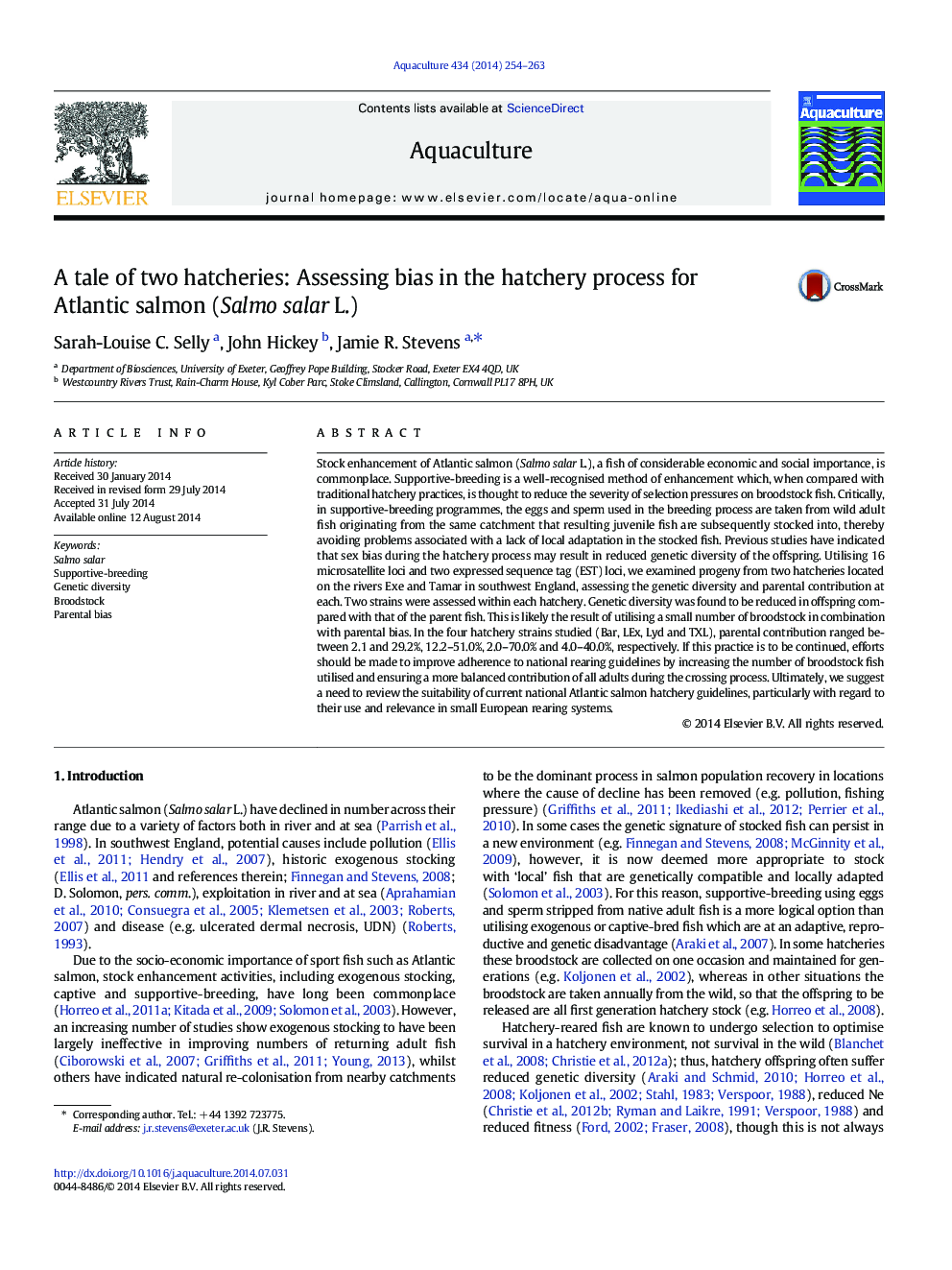| کد مقاله | کد نشریه | سال انتشار | مقاله انگلیسی | نسخه تمام متن |
|---|---|---|---|---|
| 2421716 | 1552853 | 2014 | 10 صفحه PDF | دانلود رایگان |

• Hatchery-bred fish are unrepresentative of broodstock used for supportive breeding.
• Juveniles do not exhibit genetic diversity on a par with that of the wild population.
• The appropriateness of UK national hatchery guidelines and practices is considered.
Stock enhancement of Atlantic salmon (Salmo salar L.), a fish of considerable economic and social importance, is commonplace. Supportive-breeding is a well-recognised method of enhancement which, when compared with traditional hatchery practices, is thought to reduce the severity of selection pressures on broodstock fish. Critically, in supportive-breeding programmes, the eggs and sperm used in the breeding process are taken from wild adult fish originating from the same catchment that resulting juvenile fish are subsequently stocked into, thereby avoiding problems associated with a lack of local adaptation in the stocked fish. Previous studies have indicated that sex bias during the hatchery process may result in reduced genetic diversity of the offspring. Utilising 16 microsatellite loci and two expressed sequence tag (EST) loci, we examined progeny from two hatcheries located on the rivers Exe and Tamar in southwest England, assessing the genetic diversity and parental contribution at each. Two strains were assessed within each hatchery. Genetic diversity was found to be reduced in offspring compared with that of the parent fish. This is likely the result of utilising a small number of broodstock in combination with parental bias. In the four hatchery strains studied (Bar, LEx, Lyd and TXL), parental contribution ranged between 2.1 and 29.2%, 12.2–51.0%, 2.0–70.0% and 4.0–40.0%, respectively. If this practice is to be continued, efforts should be made to improve adherence to national rearing guidelines by increasing the number of broodstock fish utilised and ensuring a more balanced contribution of all adults during the crossing process. Ultimately, we suggest a need to review the suitability of current national Atlantic salmon hatchery guidelines, particularly with regard to their use and relevance in small European rearing systems.
Journal: Aquaculture - Volume 434, 20 October 2014, Pages 254–263